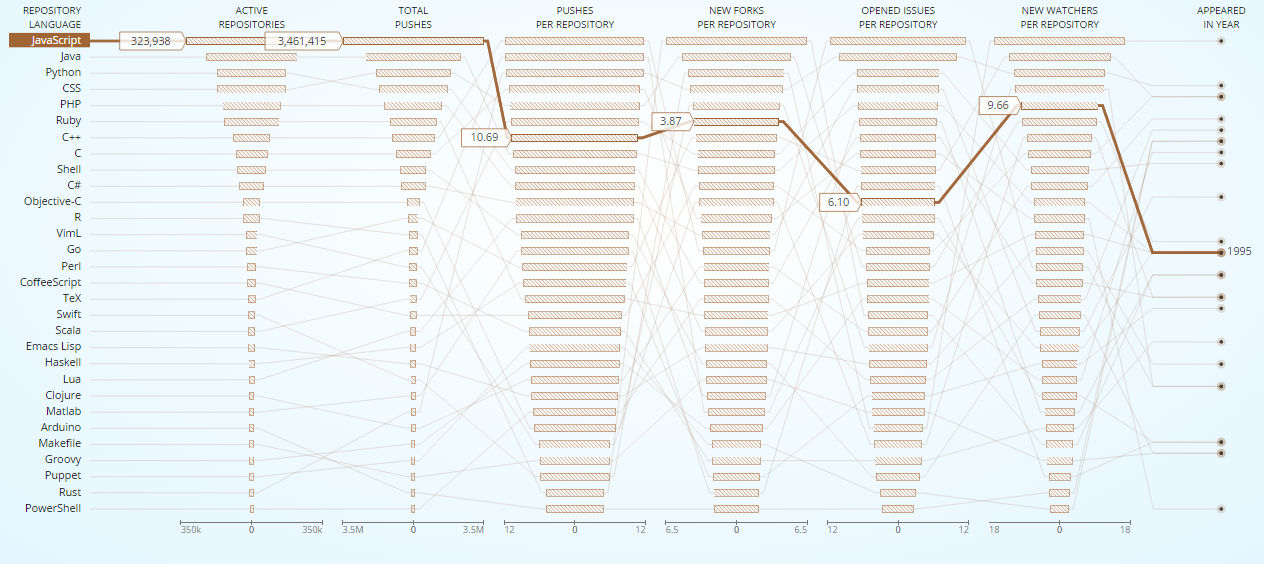| Programming Languages On GitHub |
| Written by Lucy Black | |||
| Saturday, 14 February 2015 | |||
|
What could be better than having a nice interactive display that shows how languages compare? GitHut uses GitHub data to present the state of the languages - on GitHub of course.
There is nothing like contemplating the language choice of others. We spend a lot of time mastering a language and its ecosystem, so it is only reasonable that we have an interest in what else there is. GitHub has become the main way to host development projects and as such looking at the the number of projects per language is a way to provide information on a language's popularity as judged by its usage. The stats give you the number of active repos per language as an overall popularity measure. By looking at total pushes, pushes per repo and new forks per repo, you can get an idea of how active the language sub-GitHub is. You can also see open issues per repo and new watchers per repo, but it is less clear what these indicate. As GitHut comments: "An additional note about the data is about the large amount of records in which the programming language is not specified. This particular characteristic is extremely evident for the Create Events (of repository), therefore it is not possible to visualize the trending language in terms of newly created repositories. For this reason the Activity value (in terms of number of changes pushed) has been considered the best metric for the popularity of programming languages. "
Click for larger image
If you visit the GitHut website you can select any of the horizontal bars and see the rankings in the other columns. The top language is JavaScript with more repositories and pushes that any other, but notice that the average push per repo and new forks suggest that it isn't quite as active as some other languages. Overall the newer languages have smaller numbers of repos, but are much more active in relative terms - which is what you might expect. There are also some interesting differences in language behavior. For example, if you look at the statistical language R it doesn't have a lot of repos on GitHub and the number of pushes per repo is comparatively very low but it's number one for new forks - why? Are stats programs more likely to take a whole repo and customize it rather than contribute to the main project? You can see the same sort of pattern in Apple's new Swift language. Of course, no easy stats gathering operation like this is free of error and in this case the big problem is GitHub's categorization of projects based on recognizing file extensions. This is often very wrong. So don't take these results as hard fact.
More InformationRelated ArticlesJavaScript Is The Language Of 2014 GitHub Enterprise 2.1 Released Git and GitHub top in popularity stakes
To be informed about new articles on I Programmer, install the I Programmer Toolbar, subscribe to the RSS feed, follow us on, Twitter, Facebook, Google+ or Linkedin, or sign up for our weekly newsletter.
Comments
or email your comment to: comments@i-programmer.info |
|||
| Last Updated ( Sunday, 15 February 2015 ) |



